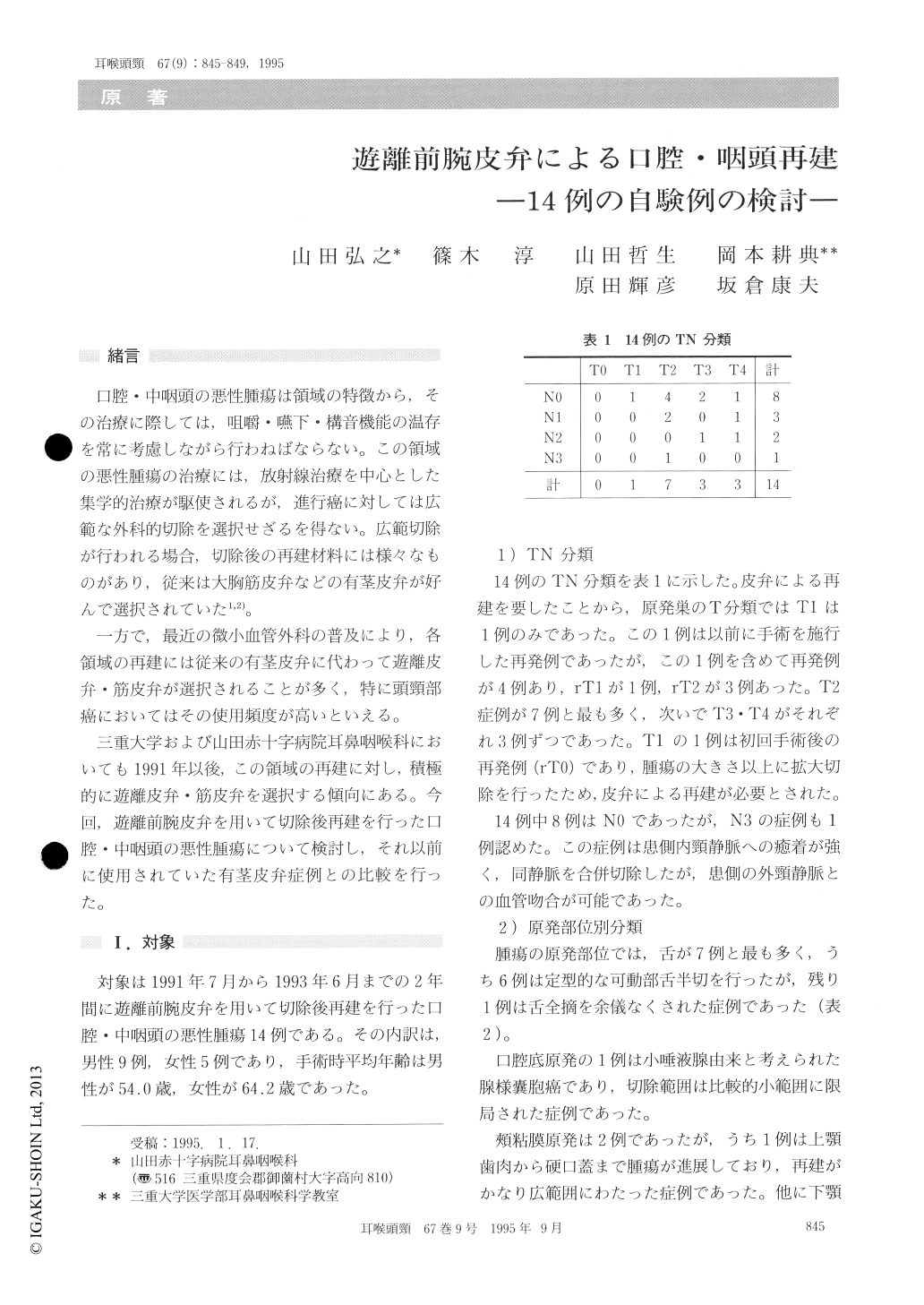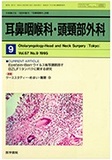Japanese
English
- 有料閲覧
- Abstract 文献概要
- 1ページ目 Look Inside
緒言
口腔・中咽頭の悪性腫瘍は領域の特徴から,その治療に際しては,咀嚼・嚥下・構音機能の温存を常に考慮しながら行わねばならない。この領域の悪性腫瘍の治療には,放射線治療を中心とした集学的治療が駆使されるが,進行癌に対しては広範な外科的切除を選択せざるを得ない。広範切除が行われる場合,切除後の再建材料には様々なものがあり,従来は大胸筋皮弁などの有茎皮弁が好んで選択されていた1,2)。
一方で,最近の微小血管外科の普及により,各領域の再建には従来の有茎皮弁に代わって遊離皮弁・筋皮弁が選択されることが多く,特に頭頸部癌においてはその使用頻度が高いといえる。
三重大学および山田赤十字病院耳鼻咽喉科においても1991年以後,この領域の再建に対し,積極的に遊離皮弁・筋皮弁を選択する傾向にある。今回,遊離前腕皮弁を用いて切除後再建を行った口腔・中咽頭の悪性腫瘍について検討し,それ以前に使用されていた有茎皮弁症例との比較を行った。
From 1991 to 1993, we have performed reconstruc-tions of the oropharyngeal defects using a free radial forearm flap in 14 patients. All but one patients had squamous cell carcinoma. One patient had a adenoid cystic carcinoma in the oral floor. In three cases who received prior radical neck dissec-tion, microvascular anastomoses were performed at contralateral cervical area. Intra-arterial chemo-therapy was performeud in the external carotid artery in 8 cases, but no troubles in anastomosis was happened. The maximal size of a flap was 12 x 10 cm. In all but one cases the flaps were successfully transplanted without any necrosis. The overall sur-vival rate of free flap was 92.3%.
Our experience suggested that the free radial forearm flap was one of the most suitable flaps for reconstruction after resection of oropharyngeal can-cer.

Copyright © 1995, Igaku-Shoin Ltd. All rights reserved.


